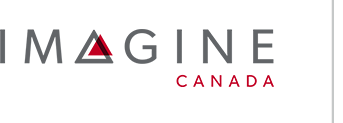| A charity's newsletter promotes an event |
The newsletter's cost could be allocated based on ...
- the number of pages used to promote the event compared to the total number of newsletter pages (for example, if a charity publishes an eight-page newsletter each month and uses one page to promote an event, then one-eighth of the cost of the newsletter could be recorded under“event promotion”), or
- the number of words in the promotion compared to the total number of words in the newsletter, or
- the staff time spent to write the promotion compared to the total staff time to write the newsletter.
|
| The charity's telephone system is used by staff to provide counselling services |
The phone system's cost could be allocated based on ...
- the number of staff providing counselling compared to the total number of staff (for example,if a charity has ten staff members and two of them provide counselling services, then one-fifth of the cost of the phone bill could be recorded under “counselling services”), or
- the staff time spent on counselling compared to the total staff time, or
- the floor space of counsellors' offices compared to the charity's total floor space
|
| The executive director travels across the country, teaching education programs, visiting funders, and meeting with regional managers. |
The executive director’s travel cost could be allocated based on ...
- the time the executive director spent on each activity (for example, if the executive director is away for three days and spends one day teaching, one day meeting with funders, and one day meeting with regional managers, then one-third of the cost of the travel bill could recorded under each of these activities), or
- the direct costs incurred by each activity (for example, if the total direct costs of the education program were $30,000, fundraising direct costs were $5,000, and regional managers’ salary direct costs were $65,000, then education would be charged 30% of the travel, fundraising 5%, and the regions 65%). or
- the revenue associated with each activity (for example, if the education program generated $50,000 in revenue, fundraising $75,000, and the regions $375,000, then education would be charged 10%, fundraising 15%, and the regions 75%).
|
| A laboratory is used sometimes by several researchers and is sometimes rented out to other organizations. |
The laboratory's cost could be allocated based on ...
- the amount of time the lab is used in each of the activities (for example, if researchers from three different programs in the charity each use the lab one day a week, with the other two days rented out, one-fifth of the cost of maintaining the lab can be recorded under each of the three program areas, and two-fifths recorded as a cost of earning rental income), or
- the number of researchers involved in each activity, or
- the direct costs incurred for each activity (for example, if the lab's direct costs were $5,000 for program A, $25,000 for program B, $25,000 for program C, and $45,000 for the times when the lab is rented out, then 5% would be recorded for program A, 25% for B, 25% for C, and 45% as a cost of earning rental income).
|

